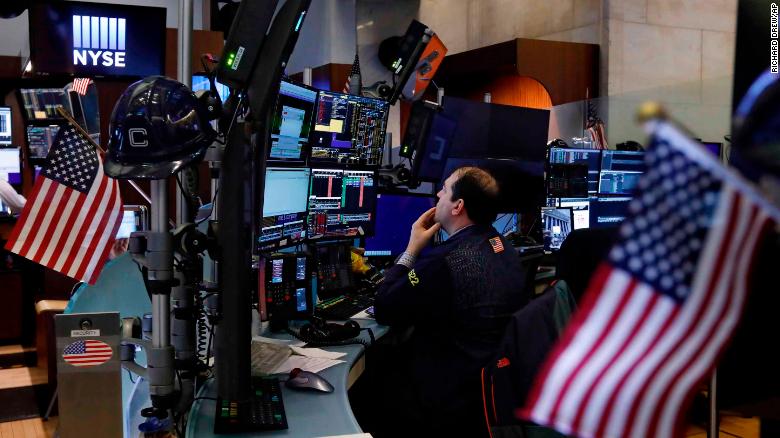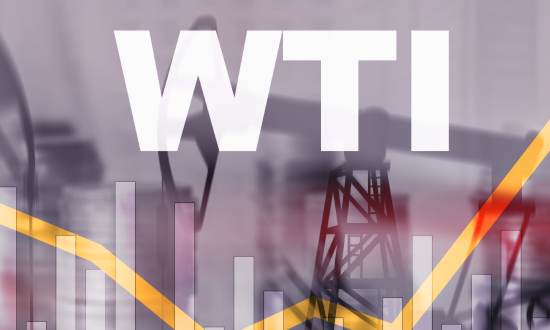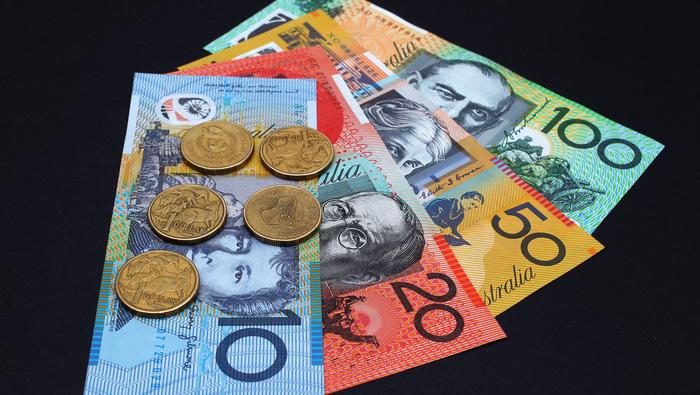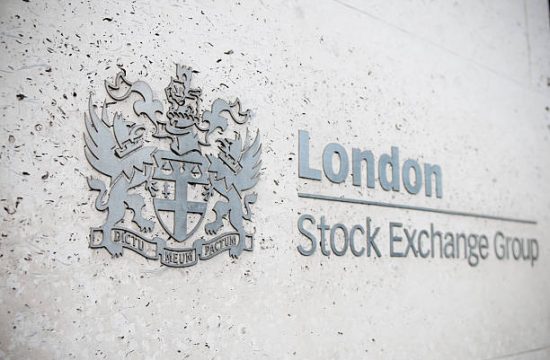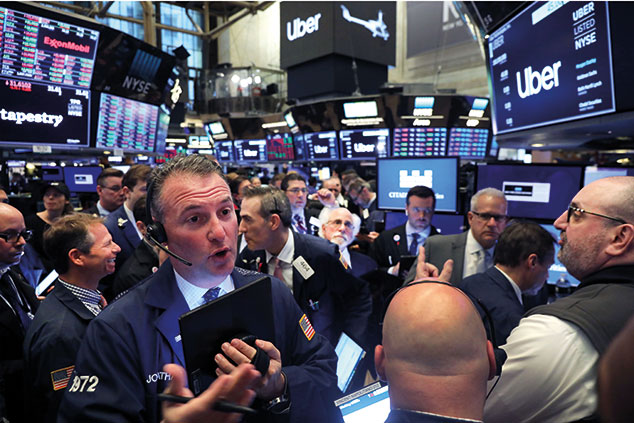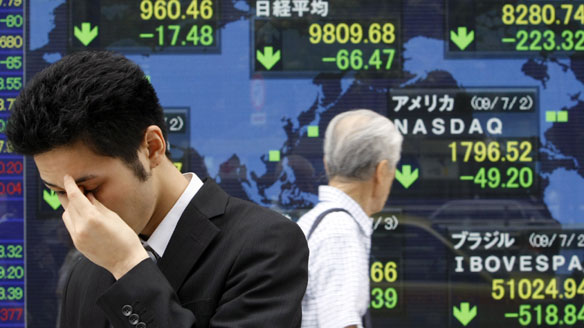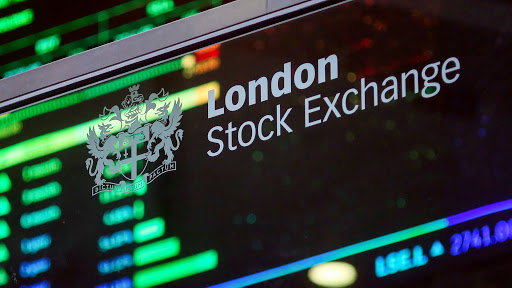Investors remain focused on the trend of coronavirus cases across the globe. The World Health Organisation (WHO) is seeing different trends in different regions and even within regions. Globally, around 2.7 million cases of COVID-19 have been reported, and more than 190,000 deaths.
As the WHO warns that the virus will be with the world for a long time and there is a long way to go, investors are adjusting to the “new normal” knowing that the world may not go back to the way things used to be just yet.
It was another busy week for investors who are navigating in an uncertain and unprecedented environment:
- Storage Problem & Negative Oil Price Futures
- Virus Trials Data Leaked
- Earnings Season
- Economic Data – Sharper Contraction of Global PMIs
Negative Oil Price Futures
The pandemic has caused a mass halt of activities and the shutdown of businesses around the world in an abrupt and unprecedented manner, which has crushed oil demand at a time where production was reaching new highs.
The energy ministers of major economies have come together to bring some stability to the oil market. OPEC+ group agreed to historic production cuts – but it was not fast enough and a little bit too late for the energy market. The damage initially caused by an oil price war between Saudi Arabia and Russia is irreversible during such pandemic.
|
The storage capacity is the biggest driver of the collapse in crude oil prices this week!
|
The oil crash as seen earlier this week that roiled the markets was triggered by the inability for investors or traders to take physical deliveries of oil barrels due to the lack of storage facilities. The world is running out of spare room to store the fast-expanding glut that the pandemic has created.
The storage problem is so dire that investors or traders holding oil contracts are willing to sell their contracts at a loss, causing crude oil futures to turn negative for the first time in history.
|
US crude oil futures for May dropped into negative territory on Monday triggering another panic in the financial markets. In a nutshell, traders are willing to pay people to take barrels.
|
Source: Bloomberg
As of writing, WTI and Brent Crude are trading in the vicinity of $8 and $21 respectively.
Virus Trials Leaked
The speculations that remdesivir, a leading drug closely regarded as a potential treatment for COVID-19 patients, failed to hit markets on Thursday. The assumptions were based on a summary of a study posted on the website of the WHO, which was later removed.
The summary stated that the drug was “not associated with a difference in time to clinical improvement,” and there was “almost no difference in the fatality rate of patients given remdesivir compared to those who received the placebo”.
Gilead Sciences, a US company that facilitate the trials to Chinese scientists through a compassionate use program tumbled by more than 8% on Thursday before paring some losses to finish 4.3% lower at $77.80.
The chief medical officer at Gilead Sciences defended the results that were prematurely posted on the WHO’s website:
“We believe the post included inappropriate characterizations of the study. The study was terminated early due to low enrollment and, as a result, it was underpowered to enable statistically meaningful conclusions. As such, the study results are inconclusive, though trends in the data suggest a potential benefit for remdesivir, particularly among patients treated early in the disease.”
Investors will likely keep a close watch on further statements of the study and the details of which group of patients are more responsive to the drug. We note that other studies will be due by the end of May.
US Earnings
IBM, Netflix Inc, Snap AT&T, and Intel Corp were among the major large-cap corporations reporting earnings this week. Even though the pandemic is expected to portrait a dire outlook, earnings results are much awaited to gauge if large companies can muddle through the crisis and how they are preparing for an eventual recovery.
IBM
The company reported earnings of $1.84 per share and revenue of $17.57 billion. While earnings came above forecasts, revenue was slightly below the estimates. IBM withdrew its full-year 2020 guidance in the light of the current COVID-19 crisis. The company also stated that they would reassess this position based on the clarity of the macroeconomic recovery at the end of the second quarter.
All in all, unless business conditions deteriorate further, the company is flaring quite well during the pandemic crisis. As of writing, its share price is currently trading at $121.43 and has recouped all the losses made after the release of the earnings reports.
Netflix Inc.
The company reported $5.8billion in revenue with a year-on-year growth of 27.6%. The number of subscribers scored above estimates and more than double its target with 15.77 million paid subscribers. The substantial growth came in March as the lockdown, and social distancing measures forced many more households to join Netflix.
However, the company warned that revenue and growth might decline mostly due to probable lift of the confinement measures, strong US dollar that is impacting international revenue growth and a lack of high-quality content following the pause in production.
Its share price seesawed between a range of $420 and $440 as investors digest the buoyant results and the uncertain foreseeable outlook.
Snap Inc.
As the public practices physical distancing and remain at home, Snap’s user base grew to 229 million daily active users, up by 20% from last year.
Q1 Financial Highlights:
- Revenue increased 44% YoY to $462 million
- The average revenue per user increased by 20% YoY to $2.02
Given the uncertainties related to the ongoing COVID-19 pandemic and the rapidly shifting macro conditions, the company is not providing any expectations for revenue. However, while there is uncertainty about near-term growth rates, the company remains optimistic that there are numerous factors that position the business favourably in this current challenging environment.
Its share price skyrocketed and rose to a high of just shy of $17 before paring some gains to finish at $16.06 on Thursday.
AT&T
The corporate results were weak but somewhat promising. While TV subscribers continue to take a hit, monthly phone subscribers were among the main areas of strength for the first quarter- it has doubled in the same period last year.
- Adjusted EPS of $0.84 ($0.89 without COVID-19 impact) compared to $0.86 in the year-ago quarter
- Cash from operations of $8.9 billion
- Capital expenditures of $5.0 billion
- Free cash flow of $3.9 billion
- Consolidated revenues of $42.8 billion
Overall, the company has enough cash flow to continue investment in critical growth areas. As of writing, the company’s share price is trading lower just below $30.
Intel Corp
Intel Corp reported above forecasts earnings per share and revenue in the first quarter.
- First-quarter revenue was $19.8 billion, up 23% year-over-year (YoY).
- First-quarter GAAP earnings-per-share (EPS) was $1.31, up51 per cent YoY; non-GAAP EPS of $1.45 was up 63 per cent.
- Generated $6.2 billion cash from operations and $2.9 billion of free cash flow while strengthening liquidity with$10.3 billion in new debt and suspension of share buybacks.
- Expecting second-quarter revenue of $18.5 billion.
- Consolidated revenues of $42.8 billion
Similarly, like other companies, Intel is not providing full-year guidance given the significant economic uncertainty. The company expects weaker demand from enterprises and government customers in the second half of 2020.
As of writing, the company’s share price recovered from losses made during the week but struggled to trade above $60.
Economic Data
- Headline inflation came at 1.5% in line with expectations.
- Official figures showed that the jobless rate rose to 4.0% in February, from the previous 3.9%.
- On the bright side, Claimant count rose by 12.1k, far better than the 172.5k projected.
- The preliminary Retail Sales rose by 8.2% in March compared to a growth of 0.5% in February.
- Trade data was upbeat – exports rose by 29% in March and imports surged by 10%. The significant uptick in exports is mostly due to the outbound shipments of the resource sector.
The dismal preliminary PMI figures across the globe reiterate the drastic slowdown in the economic activity. Globally, the readings of the manufacturing and services sector plunged and were mostly below expectations.
Jobless Claims continue to be in the millions. In the week ending April 18, initial claims were almost 4.5 million, which is lower than the 5.23 million in the previous week. However, it remains high and takes the toll to a record 26 million since the pandemic.
Havel Appeal
Gold and the US dollar have picked up haven bids throughout the week as a combination of an oil crash, disappointing PMI data showing sharper contractions and virus trial leaks, which has dampened risk sentiment.
Towards the end of the week, the momentum of both haven assets has tamed down. The yellow metal rallied above $1,720 but is seesawing around those levels. Investors are focusing on some positives – the $484B US aid package was passed by the House, and the talks of relaying plans to re-open the US economy.
Major currencies were mostly weaker against the US dollar. Commodity currencies like the Canadian and Australian dollar edged higher backed by some stability in crude oil prices. The Australian dollar also found support on a few encouraging economic data.
Upcoming Earnings Reports
|
Company
|
Reporting Time
|
Teleconference/ Webcast Time
|
|
American Express (NYSE:AXP)
|
Before Bell
|
At 8.30 AM (ET) results will be reviewed via a conference call.
|
|
Verizon Communications Inc (NYSE:VZ)
|
Before Bell
|
At 8.30 AM (ET) results will be reviewed via a conference call.
|



